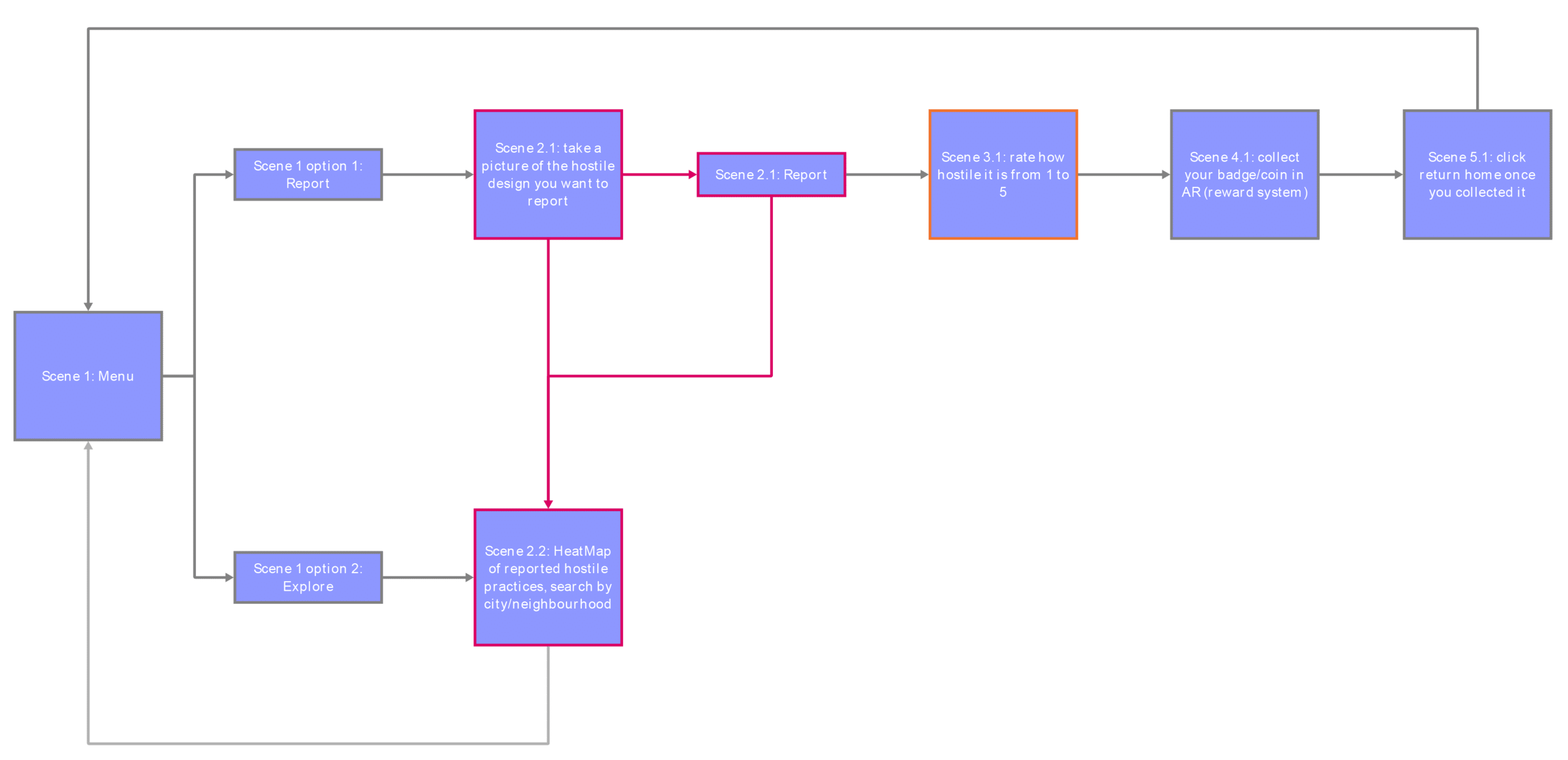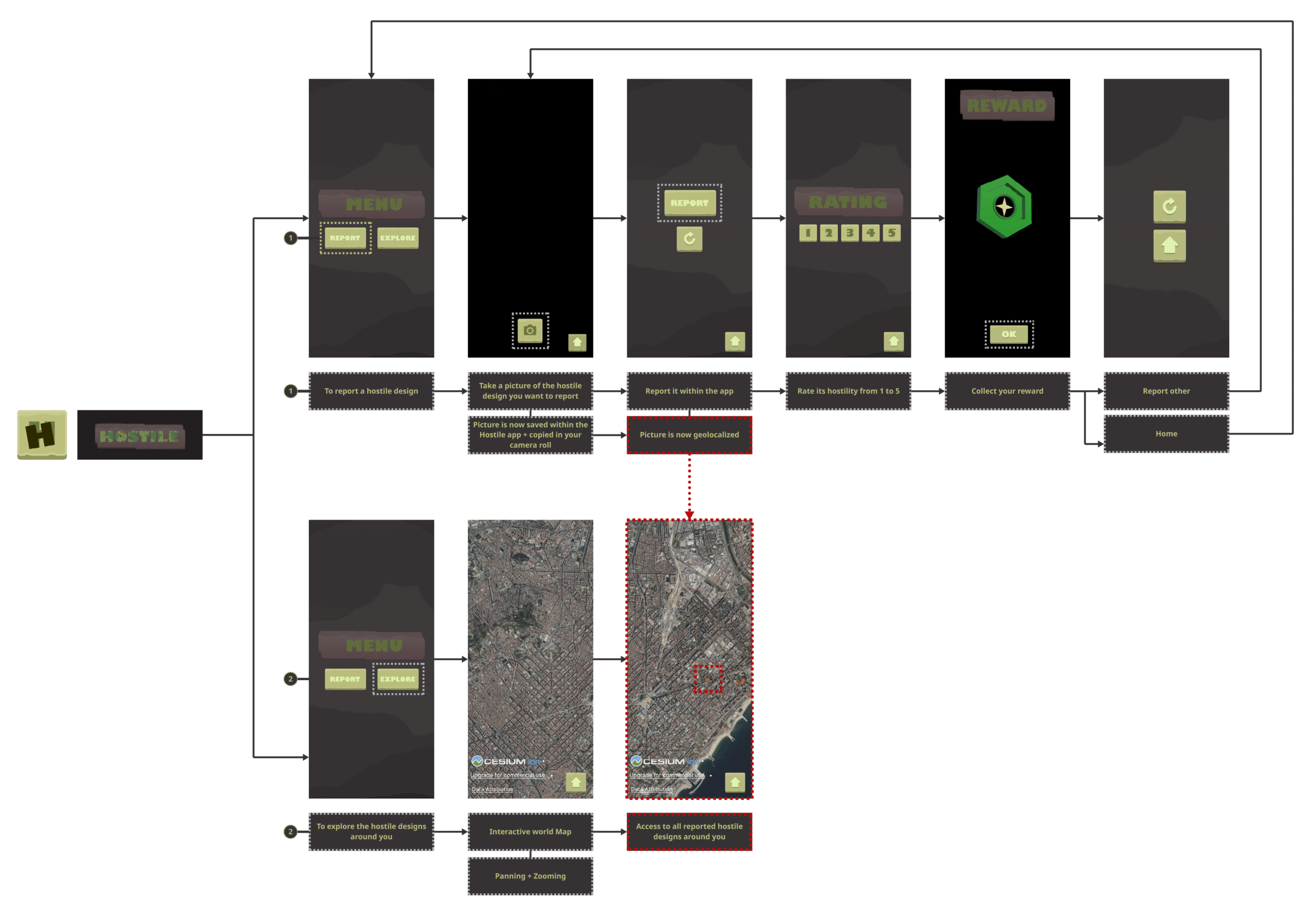Architectural Alienation
In a world that is rapidly urbanizing itself, architecture holds immense power to shape the lives of individuals and how they experience the public space. Yet, architectural design often neglects the various needs of the community it is supposed to serve, leading to alienation and exclusion, particularly for marginalized populations.
–
1.1.Hostile design
Hostile Design: design elements in public spaces that are intentionally created to discourage certain behaviors or groups of people, such as the homeless, from using those spaces.
–
Forceful measures:
Mildly defensive measures:
–
1.2. Architectural Alienation: a layered issue
- Hostile architecture impacts all users, not just the homeless
- Prioritizes discomfort
- Erodes the communal nature of public spaces
- Promotes gentrification
- Public spaces become tools of control
–
1.3. HOSTILE: the social justice app
You don’t need to be a representative, a stakeholder, or a decision maker to take meaningful action. Social change does not only come from institutions, but also from individuals who are aware and engaged in their communities. This app was developed to increase awareness of social issues in one’s surroundings and to return a sense of agency to the public. It offers accessible tools for participation, making social justice work something anyone can engage in. To encourage continued use, the app includes a reward system: users receive a small incentive each time they report an issue, creating a sense of instant gratification and helping to build habits of sustained engagement. Through the Hostile app, we can map hostile design practices across cities, revealing hidden stress zones and optimizing urban design for collective wellbeing.



